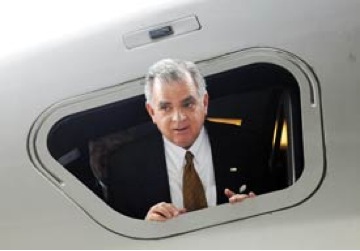Most of the news coverage about what is happening in Washington compartmentalizes health and transportation, missing key connections between the two.
This week, Americans from around the country will speak to their representatives, seeking to emphasize those links. The “health fly-in” will commence Thursday and is sponsored by Transportation for America, the American Public Health Association, the Complete Streets campaign and PolicyLink, a research institute specializing in social equity.
The U.S. transportation system – our roads, bridges and highways, as well as bicycle and pedestrian paths – propels our social and economic lives. Unfortunately, the system we have takes a significant toll on our health and safety.
By building neighborhoods, towns and cities that require a car trip for nearly every move we make, we have literally engineered physical activity out of our daily lives. In many sprawling communities, driving is the only option for getting to school, work and recreation, and new road projects tend to favor speeding cars over the people who cross the street.
Poor air quality resulting from pollution contributes between $40 billion and $60 billion to U.S. health care costs annually. Each hour spent in the car increases the risk of obesity. And further, the lack of emphasis on transit, walking and biking lowers mobility for disadvantaged Americans and makes our streets less safe for people both behind the wheel and on foot.
Transportation policy can no longer be viewed in isolation. That is why groups like the American Public Health Association are educating people about the links between the built environment and our personal well-being and organizations from different policy arenas that never saw the need to work with each other before are joining hands.
This week has been all about making the health and transportation link more concrete, and there is more to come.




 Last week, an offhand comment by Republican Senator John Ensign about the link between health and transportation policy didn’t make the headlines, but it did make an interesting connection.
Last week, an offhand comment by Republican Senator John Ensign about the link between health and transportation policy didn’t make the headlines, but it did make an interesting connection.